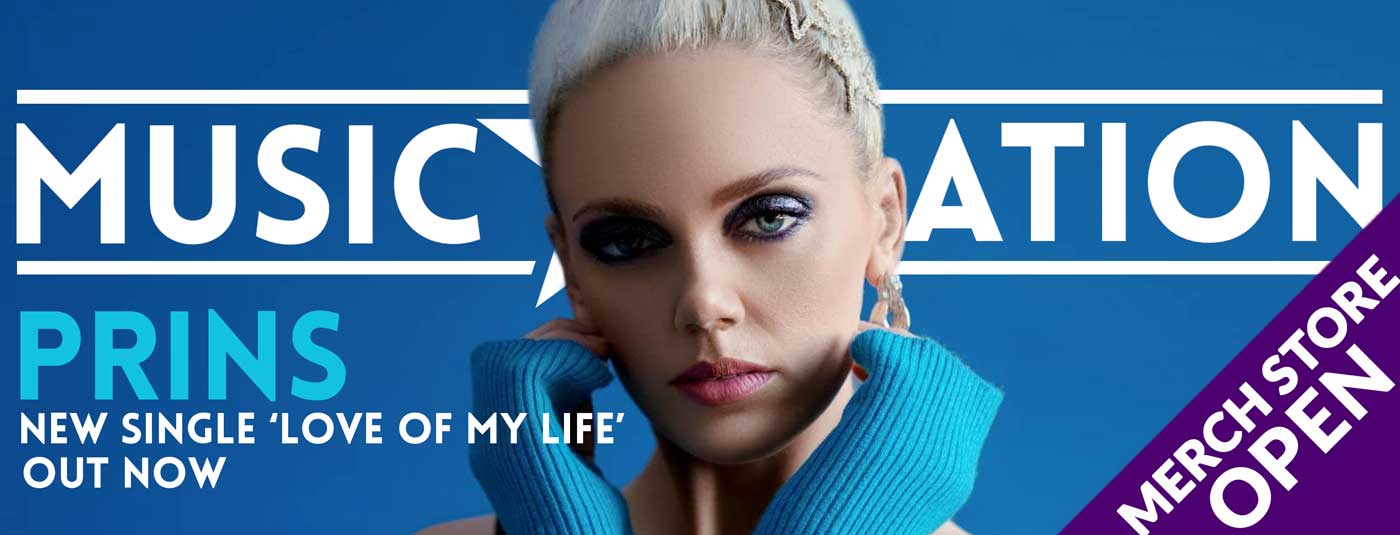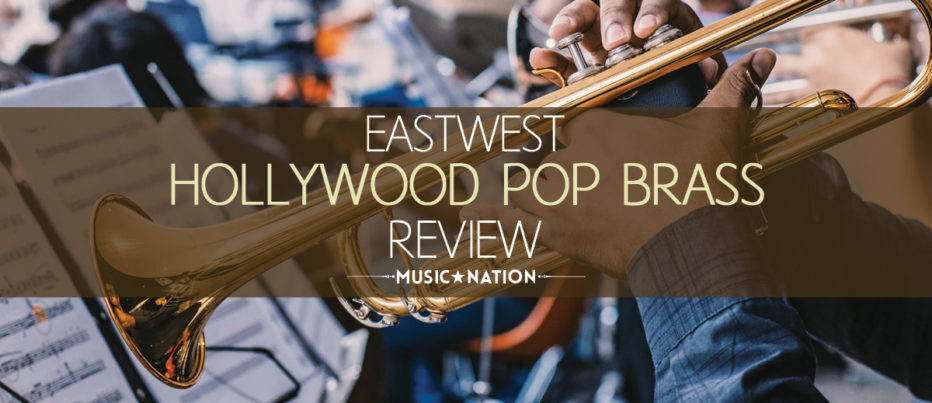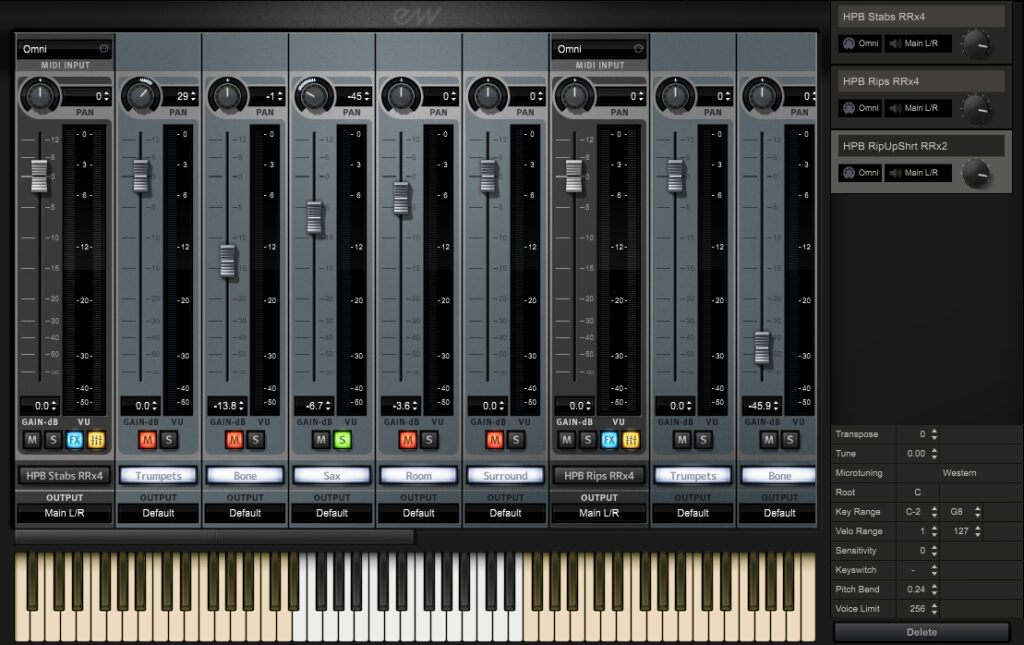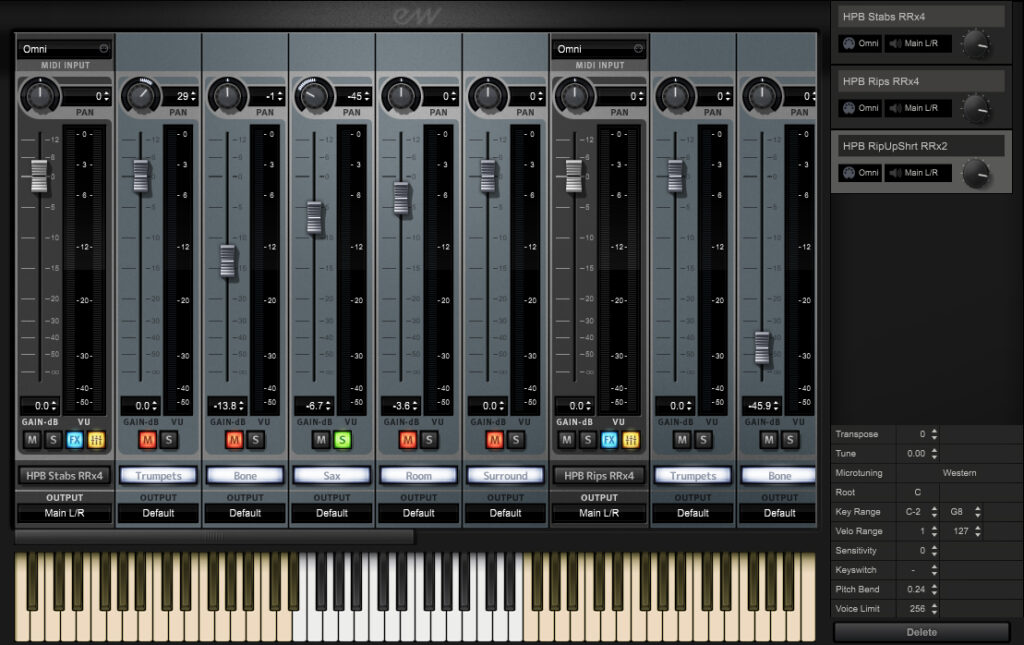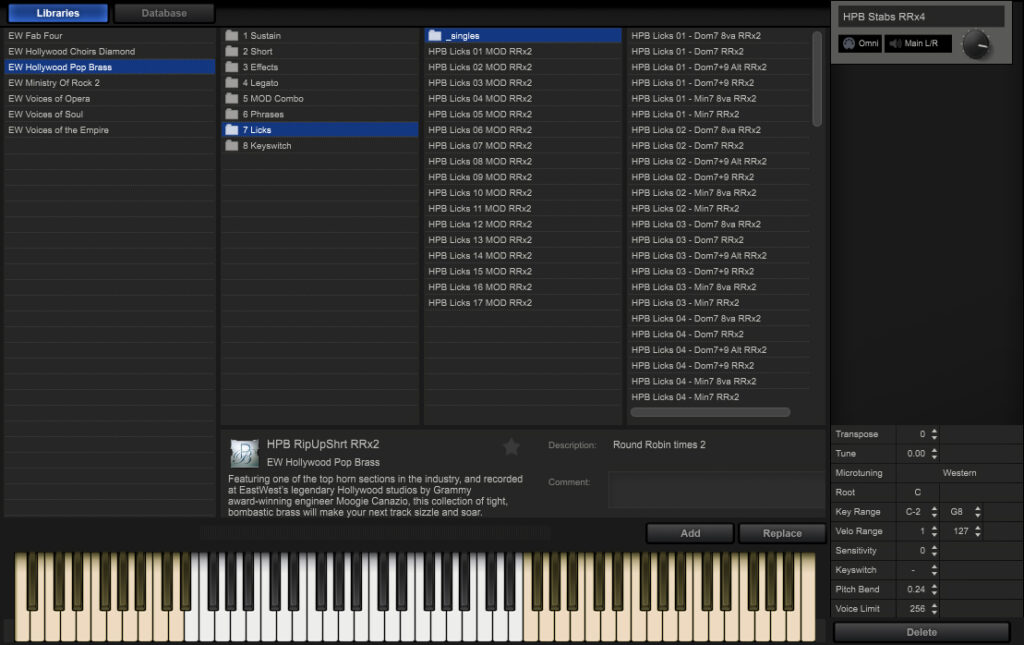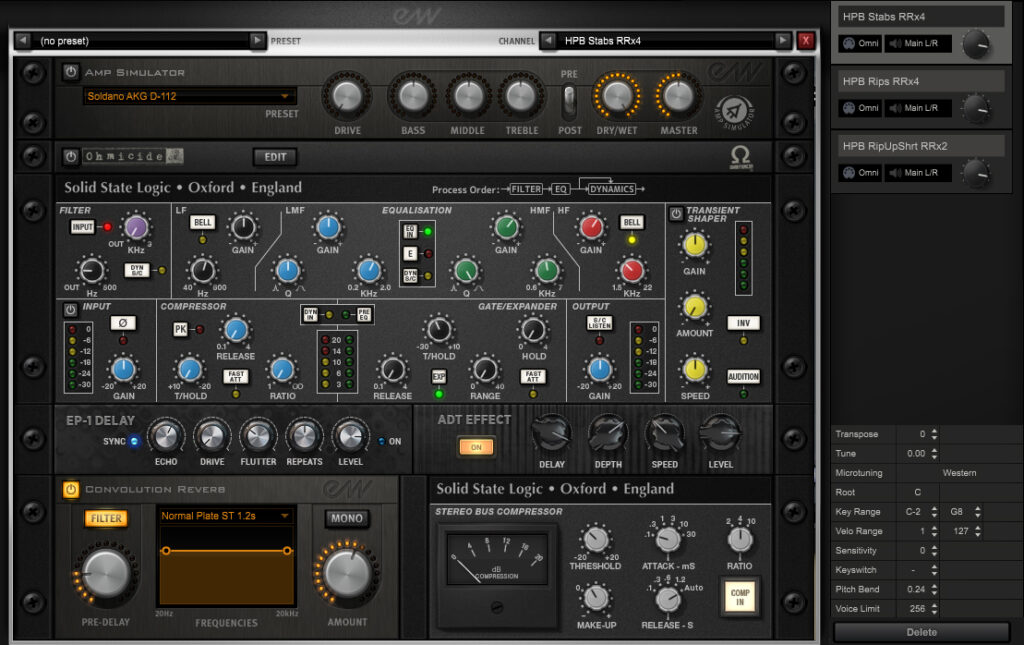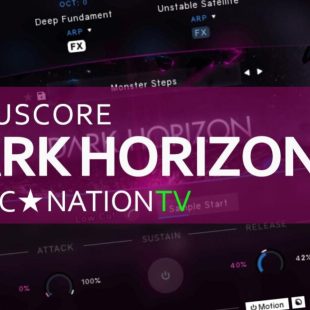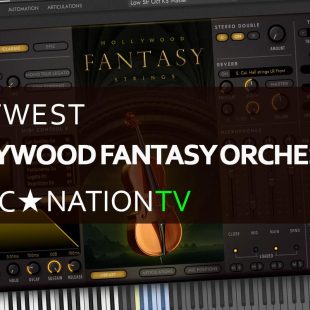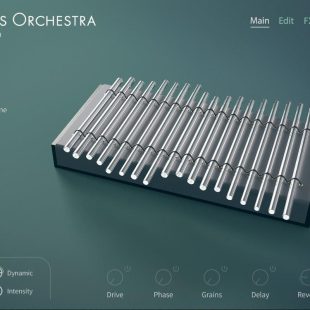EASTWEST POP BRASS – HIT THAT PERFECT NOTE
EastWest is continuing the trend of releasing rather left-field titles with Hollywood Pop Brass, one that focuses on a genre that is technically very difficult to replicate with samples. While there are many orchestral brass libraries on offer, reproducing the swing and feel of a live brass band is a completely different challenge altogether.
A surprisingly fresh direction for EastWest, who traditionally produce more cinematic instrumentation, Hollywood Pop Brass looks exciting and I was expecting great things.
OVERVIEW
Hollywood Pop Brass is a sample library for the EastWest Play Engine platform weighing in at around 23GB fully installed. It contains a huge selection of unique articulations from a top four-piece horn section featuring two trumpets, a trombone and sax (alternating between baritone, tenor and alto, depending on the phrase).
The recordings were made at the wonderful EastWest Studio 1 in Los Angeles, ‘the best brass recording room in the world’, according to Michael Jackson’s engineer, Bruce Swedien. The venue is synonymous with big band hits of yesteryear, and with top engineer Moogie Canazio on hand, there is a lot of technology and experience behind this title.
A full set of articulations is included, most with 8 round-robin layers for added realism. Key-switch multis feature all articulations within a single patch for performance, plus a selection of mod wheel or velocity control patches for alternative play styles.
The main interface contains three instrument mics (sax, trumpets and trombone), a room ambience and surrounds mic signals. EastWests’ amazing convolution reverb is included, plus a full mixing suite with an SSL channel strip and various tailored rack devices.
DIVING IN
Anyone familiar with the EastWest Play engine platform will be immediately at home here. Everything works as you would expect, with no manual diving required for me during the review other than to check articulation descriptions.
If you are new to the Play environment there are a few workflow basics you will need to master before you undertake any work.
Play is separated into three distinct sections: the browser, for loading banks; the mixer for balancing loaded banks; and the main player section for controlling performances. Familiarizing yourself with the basic workflow might take some time if you are completely new to sample libraries but on the whole, the Play engine interface is straightforward enough to comprehend quickly.
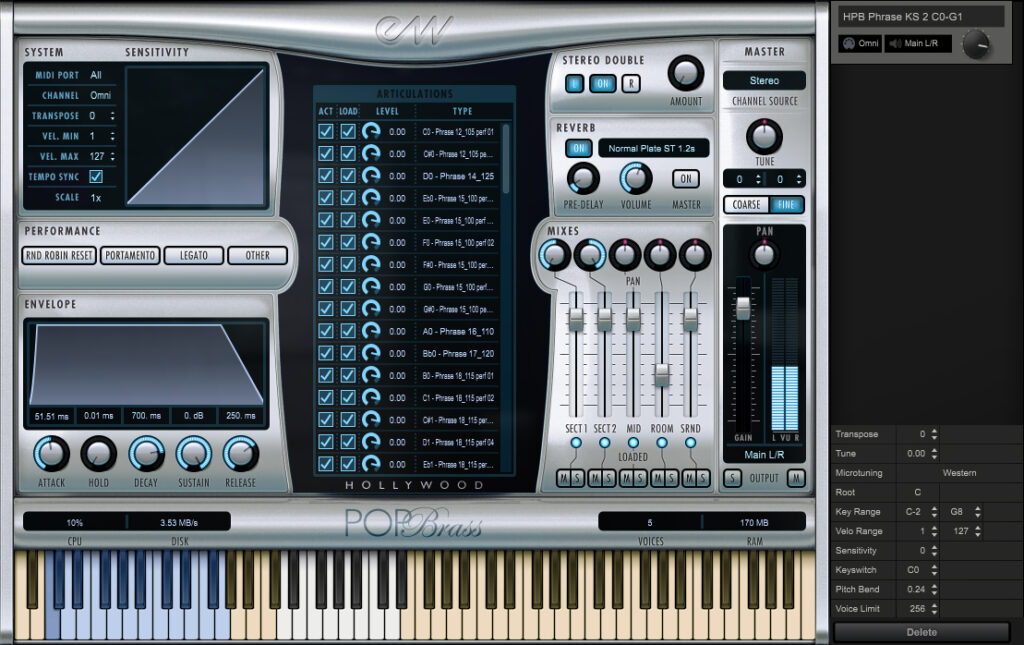
WORKFLOW
Unlike Kontakt or UVI Falcon, EastWest Play does not generate sounds or effects natively. Rather, it relies on individual libraries to provide more tailored processing along with the required instrument samples. Play is more a sandbox studio providing mixing and routing internally so you do not need to worry about mixing in your DAW.
Though a good amount of effect processing is available, I found that I rarely needed to use corrective EQ because the sounds are so well recorded in the first place. There is some scope for creative processing sound design, with amp simulators and various modulation delay effects. But on the whole, I barely needed to open the mixer.
Pop Brass is a small ensemble band split up into smaller snippets. There is less focus on melodic playable patches, but more on big collections of riffs and phrases. Out of the box, I found the workflow not particularly user-friendly for a very amateur pop brass arranger, like myself. If you do not want to rely solely on the recorded phrases, a solid understanding of brass section arrangement and voicing would be beneficial.
Most of the time I used Pop Brass for embellishments – quick little stabs and lines. Though longer sustained notes are certainly here, the vast majority of the content is phrases, effects and licks, all of which lend to sequencing using cobblestone blocks, rather than long drawn-out melodic passages.
THE GUI
We have covered many EastWest Play Engine-based libraries in the past which all operate much the same way. As mentioned, the platform is separated into three main sections: the browser for cataloguing patches; the mixer for balancing articulations and effects; and the player for most of the performance-related controls.
EastWest’s global styling very much minimises confusion and learning curves for each title – which is perfect for folks using the ComposerCloud subscription service. This does, however, lead to some workflows not being as optimised as they could be.
Pop Brass is fortunate in that the front GUI contains several essential functions for performance that ordinarily I would never touch, and I found controlling the front mic mixer and ADSR via MIDI remote quite necessary for maximum realism.
THE SOUND
Compared with typical orchestral brass libraries, Hollywood Pop Brass has greater humanistic characteristics due to the more bluesy swing style of the recordings. Thanks to the excellent musicianship pretty much everything you play sounds realistic.
This library does require more planning as to when and where you want to use articulations in your arrangments. Because I am not familiar with the associated Italian terminology when it comes to brass, much of my time was spent auditioning articulations searching for the right fit and feel.
As far as playable patches go, the Keyswtich category contains a number of nicely arranged articulation sets. In particular, the Sus_Short KS is usable over most arrangments and the patch I usually go to first when working with the library. Each of the articulation layers in this patch relates very well with each other, meaning swapping around between samples sounds surprisingly cohesive.
The samples all tempo lock with each other across the key range, meaning lower-pitched notes take the same time to develop as higher pitched. This makes chords sound in sync.
The included mic channels are extremely flexible. The three sections (sax, trumpets and trombones) each have their own dry mix channel, with a global room and surround recordings included. In addition, the excellent and extensive EastWest convolution reverb effect presets are available, all of which sound excellent.
Hollywood Pop Brass is a rather addictive library to work with. I confess that I am not at all familiar with big-band brass arranging, but I must admit that this is mostly because I have not run across a sample library done quite so well as this.
I found that once I got a feel for the voicings, I was putting more and more elements into my arrangements that I would not normally have thought of. There is a number of really cool phrase combinations that I found to work really well with each other and in my testing I chose to use them frequently.
My most exciting discovery was how well the library works with Latin music, especially Merengue (of which I am a huge fan). I have recently begun a new set of tracks based upon this genre, largely thanks to the excellent feel and response that Pop Brass has for this very quick, syncopated style of music.
PERFORMANCE CONTROLS
The standard EastWest front-end controls are present, allowing you to greatly modify the performance timing of the recordings. You can tighten up the attack and extend the release to create completely new play dynamics with almost no noticeable artefacts, though you will inevitably have some weird crossover between notes if you set the release too long.
I found that assigning the MIDI remote to the ADSR controls made for much more believable performances when recording parts, even if they only subtly changed during the performance. Changing the note attack and release times on the fly greatly added to the overall human feel.
The forced portamento and legato buttons deliver mixed results, largely depending on the articulation you are controlling. In my view, Pop Brass does not sound at its best as a melodic instrument. The best results I found were achieved by muting two of the three instruments and working with just the single instrument in forced legato mode. But even then the results sounded a little ‘groggy’ and unrealistic.
The actual true-legato patch categories contain more appropriately recorded samples, and duly more realistic lines can be performed using these patches in a melodic way.
CONCLUSION
The recent batch of releases from EastWest has been both pragmatic and innovative. Following the outstanding Voices of Soul, Opera and Empire libraries, Hollywood Pop Brass is a great example of a complex medium done right.
While I still find the browsing structure slightly clunky, the front-end player works very well, particularly when exploiting the excellent mic recording mixer and the generally overlooked ADSR control options.
The recordings sound authentic and the room ambience is perfect for the brass sound. The library can comfortably cross multiple genres, including Latin – being my favourite style puts a huge smile on my face!
Of course, it is very difficult to ridicule the cost of Pop Brass if one is enrolled in the outstanding ComposerCloud, a subscription service that offers the complete catalogue of EastWest products for around $30 NZD per month, which, quite frankly the best value system on the market. To pay the RRP of nearly $820 (NZD) upfront does not make much sense to me when you could have the entire catalogue of EastWest titles for over two years for the same price.
Overall, this is another impressive title from EastWest. If you work with this genre I expect that you have heard the demos and are interested in trialling the library.
I highly recommend you do so.
Hollywood Pop Brass picks up where traditional orchestral libraries fall short, by delivering convincing and dynamic live brass band performances with great-sounding recordings. The perfect package, really.
For full details on Pop Brass or the EastWest ComposerCloud, visit www.soundsonline.com

Like the review? Shout us a cup of coffee!
